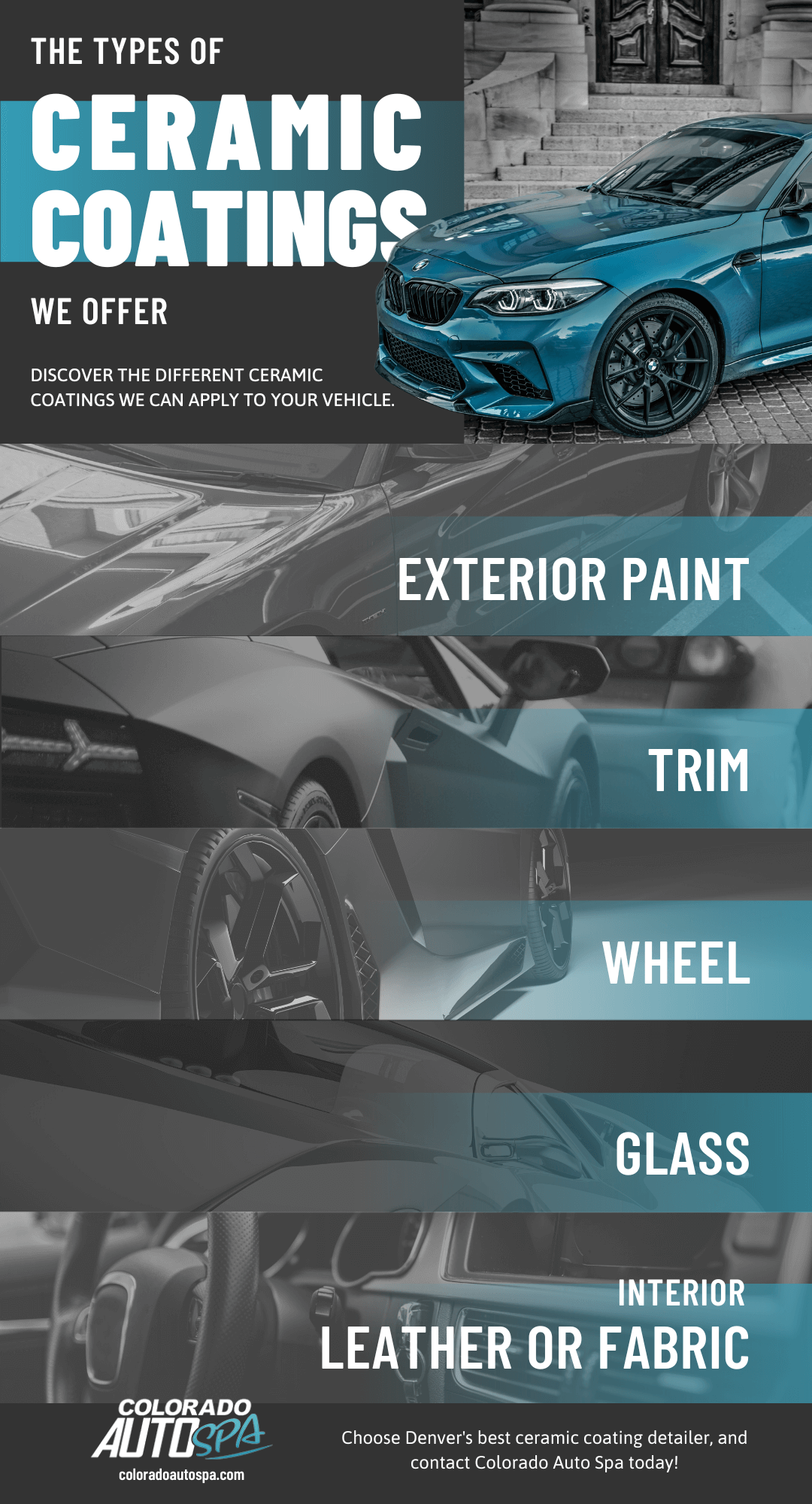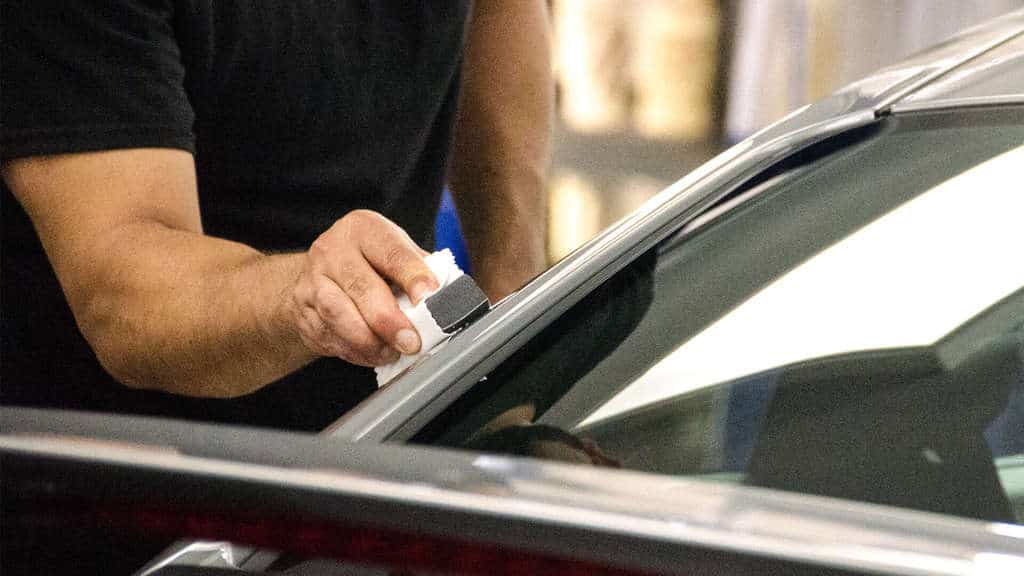How to Apply Ceramic Coating and Achieve Professional Results
How to Apply Ceramic Coating and Achieve Professional Results
Blog Article
Ceramic Coating vs. Typical Wax: Which Supplies Much Better Long-Term Security?
The discussion between ceramic finishings and standard wax for lorry protection has garnered significant attention amongst automobile lovers and specialists alike. Ceramic coatings boast remarkable long life and resistance to environmental aspects, yet the complexity of their application raises questions about availability and practicality.
Summary of Ceramic Layer
Ceramic finishing has gotten significant popularity among automobile enthusiasts and detailers alike as a result of its innovative protective high qualities. This cutting-edge innovation is made to develop a sturdy, hydrophobic shield over an automobile's paint surface area, substantially boosting its resistance to environmental impurities such as dust, UV rays, and chemical discolorations. Unlike standard wax, which offers a short-term layer of defense, ceramic finishes bond at a molecular level with the paint, providing resilient sturdiness-- typically expanding past two years with proper maintenance.
The application procedure entails careful prep work of the car's surface area, consisting of cleansing and polishing to ensure optimal attachment. When used, the coating remedies to form a robust layer that not just includes depth and gloss to the paint but likewise streamlines upkeep. With its hydrophobic residential properties, ceramic covering enables water and dust to move off even more conveniently, minimizing the frequency of cleans and lessening the risk of swirl marks.
Additionally, ceramic coverings are available in different formulations, enabling users to choose products customized to their specific demands and choices. Generally, ceramic finish represents a substantial development in paint protection modern technology, providing superior performance compared to conventional alternatives.
Introduction of Typical Wax
Traditionally considered as a staple in automobile treatment, wax works as a popular choice for those looking for a simple technique to improve and shield their automobile's paint - ceramic coating. Automotive wax typically consists of all-natural components, such as carnauba, or artificial substances, created to produce a safety layer externally of the paint. This layer not only enhances the car's gloss and radiate but also offers an obstacle against environmental impurities
The application of wax is typically easy to use, making it obtainable for both experts and DIY lovers. Once applied, wax needs a treating period, after which it hardens to form a protective covering.
However, while wax works for boosting the aesthetic charm of a car, it is necessary to keep in mind that the defense it supplies may require more frequent reapplication contrasted to alternative products, such as ceramic layers. On the whole, traditional wax remains a preferred alternative for those focusing on convenience of usage and prompt visual enhancement.
Sturdiness and Long Life Contrast
While both ceramic layers and conventional wax offer safety advantages for auto paint, their durability and longevity differ dramatically. Traditional wax, commonly made from all-natural carnauba or artificial polymers, typically gives a protective layer that lasts around three to 6 months. This reasonably short life expectancy necessitates normal reapplication to preserve optimal defense.
In contrast, ceramic coatings are engineered from innovative nanotechnology, developing a covalent bond with the paint surface area. This causes a robust, hydrophobic layer that can withstand for 2 to 5 years, depending on the product and ecological conditions. news The premium resilience of ceramic coatings is credited to their chemical structure, which uses improved resistance to scrapes, UV rays, and oxidation.

Protection Versus Environmental Elements
Protecting a car's paint from ecological elements is crucial for keeping its look and value gradually. Autos are frequently subjected to a variety of components, including UV rays, bird droppings, tree sap, acid rain, and roadway crud, all of which can endanger the integrity of the paintwork.
Ceramic finishes offer a durable defense versus these environmental assailants. Unlike typical wax, which can degrade promptly under UV exposure, ceramic coatings form a sturdy, hydrophobic layer that withstands the hazardous effects of sunshine and environmental pollutants. see post This advanced innovation creates a chemical bond with the automobile's surface area, supplying superior protection that lasts for several years, even in harsh problems.
Typical wax, while much easier to apply, commonly needs constant reapplication and supplies minimal resistance to impurities and UV rays. In time, it can break down, leaving the paint prone to scrapes and oxidation. In contrast, ceramic finishes preserve their safety top qualities longer, dramatically lowering the threat of paint damages and making certain that the vehicle keeps its visual appeal. Consequently, ceramic finishings are progressively identified as the exceptional option for long-lasting defense against environmental aspects.
Application and Upkeep Differences
The methods of application and her response succeeding upkeep for ceramic coatings and typical wax differ considerably, impacting the overall individual experience and efficiency of each item. Ceramic finishes need an even more detailed application process, normally involving surface preparation that consists of washing, decontaminating, and polishing the car. As soon as the surface area prepares, the ceramic finish is used in a regulated atmosphere, often requiring expert expertise to make sure proper treating and bonding to the paint.

While both items boost vehicle look, the longer-lasting security offered by ceramic finishings may warrant their initial financial investment, in spite of the more requiring application process. On the other hand, typical wax stays a prominent selection for those looking for a simpler, albeit temporary, service.

Final Thought
Finally, ceramic coatings show considerable benefits over conventional wax in regards to sturdiness and environmental management. With a life expectancy extending two to five years and premium resistance to UV rays, dirt, and chemical stains, ceramic layers supply an extra effective remedy for long-term car maintenance. Although the application procedure might call for professional knowledge, the resulting expense savings and lowered frequency of reapplication emphasize the value of ceramic coverings for those looking for optimal lorry security.
The discussion in between ceramic finishes and typical wax for automobile defense has actually garnered substantial focus among vehicle enthusiasts and experts alike. Unlike traditional wax, which offers a short-term layer of defense, ceramic coverings bond at a molecular degree with the paint, supplying durable resilience-- frequently expanding past two years with appropriate upkeep.
While both ceramic layers and conventional wax deal safety benefits for vehicle paint, their longevity and longevity vary substantially. For auto lovers seeking long-term defense, ceramic finishes present an engaging benefit over standard wax items.
In conclusion, ceramic finishings demonstrate considerable advantages over traditional wax in terms of toughness and ecological protection.
Report this page